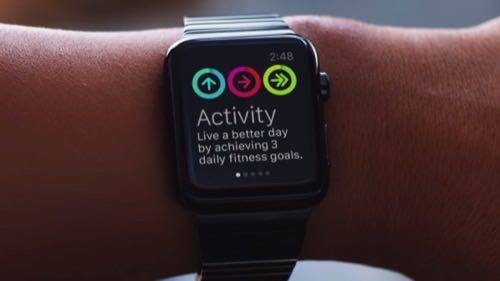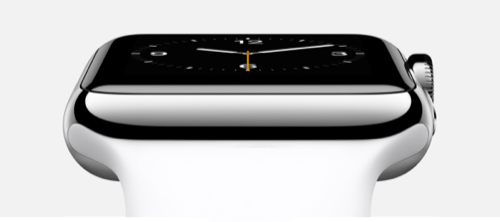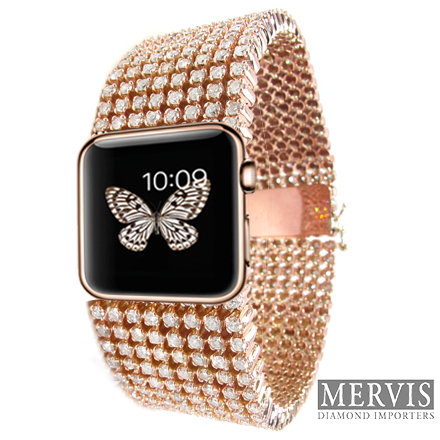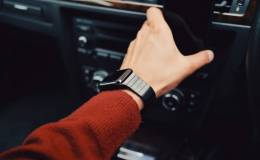On Monday, all eyes are going to be on the Yerba Buena Center for the Arts in San Francisco, where Apple is set to reveal more about its long-awaited Apple Watch. We’re expecting the Cupertino company to tell us everything we need to know about its smartwatch, including how much each model will cost and when, exactly, it will ship.
See also: Last-Minute Apple Watch Rumors: Secret Labs And Smart Straps
Here’s what you can expect when Apple Watch finally gets in the hands—and on the wrists—of consumers.
The Basics, With A Twist

On paper, at least, a lot of what the Apple Watch offers has appeared elsewhere in the nascent smartwatch market. It’s a touchscreen-based wearable, packed with sensors, that has to be tethered to a companion smartphone. You can control it with your voice (via Siri). It will ping you with notifications from popular apps, can vibrate to get your attention and will sense your movements and surroundings and act accordingly—for instance, by turning on when you raise your wrist.
If that was all there was to it, the Apple Watch would undoubtedly be a yawn. That seems unlikely. Even in these basic functions, Apple appears to have gone a step or two beyond what we’ve seen elsewhere.
The smartwatch’s sensors, for instance, will measure not just your steps, heart rate, speed and distance, but also whether you’re standing up or sitting down. (Some reports suggest Apple engineers wanted to go even further in the sensor department; some of those readings could make their way into future versions.)
See also: The Apple Watch May Have Its First Health App—A Glucose Monitor For Diabetics
Independent tools and Apple’s own Health app can plug into the data that the watch is collecting—presumably in a more helpful fashion than Google Fit on Android Wear.
Similarly, many developers are getting excited about the Apple Watch’s expected ability to proffer particular apps or information. Conceptually, this is nothing new; the entire premise underpinning Google Now and a lot of the functionality in Android Wear is that information widgets or apps pop up right when (and where) they’re required.
But the Apple smartwatch could take that in interesting new directions. For instance, the watch might recognize a compatible cashier desk and launch Apple Pay automatically, or ping you with a special offer when you walk into Starbucks. (Whether you appreciate such features is a more individual question.)
After all, it’s not as if Apple doesn’t have a history of combining features we’ve seen before and synthesizing them into something new. Remember, it managed to convince millions of people that tablets really were a good idea after several of its rivals failed rather spectacularly to do so.
Something Completely Different

Of course, there’s a lot that will be different about the Apple Watch right out of the box. For instance, it will supposedly know when you’re looking at it, and will behave differently depending on whether you give it a quick glance or a long look. In the case of Apple’s native Calendar app, for example, a short look shows you an event invitation, while a long look might give you more details and response options.
Wrist-mounted Apple Pay, as noted above, could also be a big deal. Right now, Apple Pay only works with the latest iPhones, the 6 and 6 Plus. But as Apple executive Eddy Cue explained to CNET on Friday, the Apple Watch will allow wrist payments once you unlock it using an iPhone—and it will also work with older iPhones such as the 5, the 5S and the 5C.
The smartwatch’s embedded NFC chip makes that function possible, and it can potentially do much more. With the right software and services, it’s well within the Apple Watch’s capabilities to unlock hotel doors, open up your smart home, pay for your McDonald’s meal and register your attendance at an event, all with a wave of the hand.
The digital crown—the tiny side wheel named after the knob used to set time on traditional watches and to wind even older ones—is new as well. It handles zooming duties instead of the familiar pinch-to-zoom gesture; it will also act as the Home button and a scroll wheel as well.
The watchface, too, promises new ways of interacting. It reportedly not only senses touch but also force (a feature rumored to be heading to Apple’s next iPhone). That would let it register taps and presses are differently, which could be hugely helpful on a small screen.
The Unknown

Besides the higher end prices and the shipping dates, there are still unanswered questions. One of the biggest is also the simplest: What will make a Watch app compelling?
It most likely won’t be straightforward translations of smartphone apps. Instagram, which has featured in Apple’s promotional material, surely works better on a smartphone screen than one that’s 38 or 42 millimeters high. Many other apps so far seem similarly unappealing; there are one or two emulators around if you want to try out some app mock-ups for yourself.
For developers, it’s important that apps are not shrunk-down versions of their counterparts on the iPhone, but designed for lightweight interaction where a single tap or swipe is all that’s required to accept a friend request, decline a call, pause a music track and so on. They need to bring something different to the user.
See also: Apple Watch Battery Supposedly Lasts Only A Couple Of Hours Under Heavy Use
Battery life also remains a concern. Early reports suggested the Apple Watch might not last longer than a couple of hours under heavy use; the latest anonymously sourced reports suggest that Apple may have pushed that up to almost five hours, although battery-life estimates are notoriously unreliable.
Extending battery life, however, may come at a cost. Some developers told Business Insider that Apple has limited their access to power-hungry sensors, NFC wireless and other features in order to preserve battery life. “Apple is only going to allow developers to do the basic stuff to just get the Apple Watch out there,” Sumit Mehra, CTO of the app studio Y Media Labs, told the website.
The Apple Watch will reportedly also feature a “power reserve” mode that ratchets down or shuts off most functions beyond simply displaying the time. The watch apparently won’t enter power-reserve mode automatically, although it will reportedly prompt its user to activate it as its power supply declines.
The Bottom Line
Given such concerns, it’s not altogether certain that apps are the way forward for Apple Watch at all. Android Wear focuses more on notifications than standalone apps, while Pebble is moving away from the app concept altogether—a telling move from a company with more experience than most in the market.
Any kind of app where speed, portability and brevity are important should shine on Apple Watch, but for everything else you’ll be more likely to stick with your smartphone. The appeal of a wearable is exactly that: it’s designed to be worn, not carried around in a bag or a pocket. The difference between waving your wrist and digging a phone out of a jacket might not seem like a huge one, but it can make a real difference when you’re carting luggage down a hotel hallway or standing in line for a coffee.
It’s tempting to see Apple Watch as a standard bearer for all smartwatches, an example of how useful a device like this can be, as long everything is done right. In a month or two’s time, we’ll have a much better idea about whether it’s succeeded.
Photos courtesy of Apple except where noted









